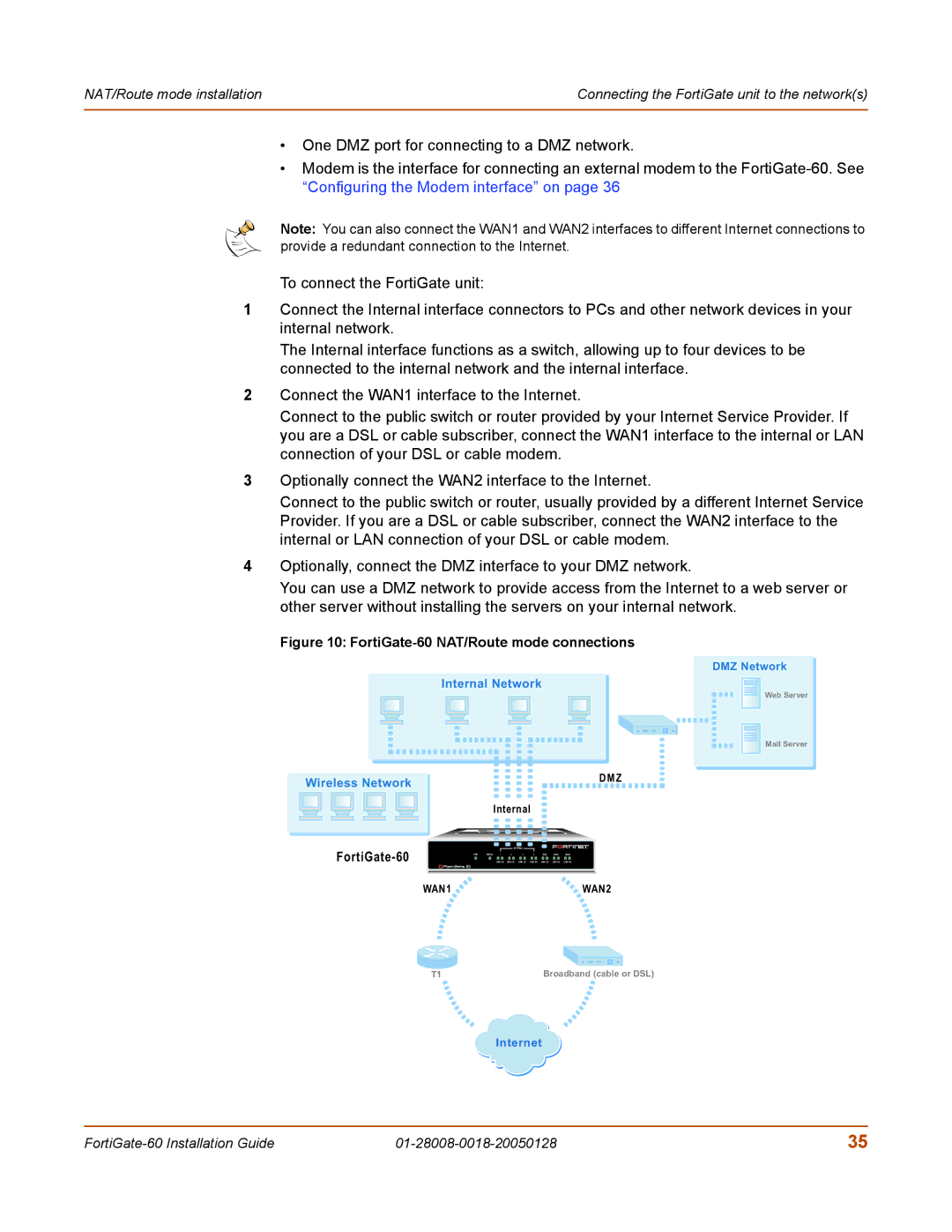
NAT/Route mode installation | Connecting the FortiGate unit to the network(s) |
|
|
•One DMZ port for connecting to a DMZ network.
•Modem is the interface for connecting an external modem to the
Note: You can also connect the WAN1 and WAN2 interfaces to different Internet connections to provide a redundant connection to the Internet.
To connect the FortiGate unit:
1Connect the Internal interface connectors to PCs and other network devices in your internal network.
The Internal interface functions as a switch, allowing up to four devices to be connected to the internal network and the internal interface.
2Connect the WAN1 interface to the Internet.
Connect to the public switch or router provided by your Internet Service Provider. If you are a DSL or cable subscriber, connect the WAN1 interface to the internal or LAN connection of your DSL or cable modem.
3Optionally connect the WAN2 interface to the Internet.
Connect to the public switch or router, usually provided by a different Internet Service Provider. If you are a DSL or cable subscriber, connect the WAN2 interface to the internal or LAN connection of your DSL or cable modem.
4Optionally, connect the DMZ interface to your DMZ network.
You can use a DMZ network to provide access from the Internet to a web server or other server without installing the servers on your internal network.
Figure 10: FortiGate-60 NAT/Route mode connections
DMZ Network
Internal Network
Web Server
Mail Server
Wireless Network | D M Z |
| |
| Internal |
FortiGate-60
|
|
| INTERNAL |
|
|
|
| |
PWR | STATUS | 1 | 2 | 3 | 4 | DMZ | WAN1 | WAN2 |
|
| LINK 100 | LINK 100 | LINK 100 | LINK 100 | LINK 100 | LINK 100 | LINK 100 |
WAN1 | WAN2 |
T1 | Broadband (cable or DSL) |
Internet
35 |
